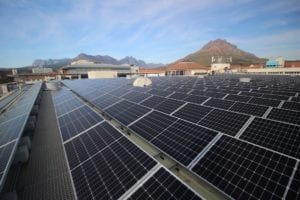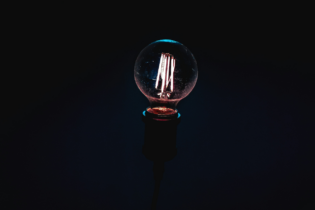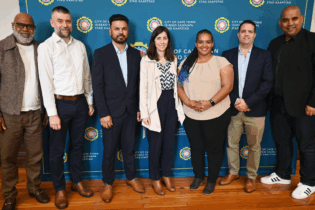In March 2020, the specialised sustainability engineering company SEM Solutions was appointed to install a 315kWp solar PV installation on the roof of the Neelsie Student Centre at Stellenbosch University (SU).
“The Student Centre is an iconic venue for the University. It was important that the solar PV project didn’t detract from the overall culture of the location,” says Menno Sulsters, Operations Manager at SEM Solutions. “All of the modules were mounted at a 15° tilt and oriented virtually due north. In total, 6 Huawei 60kW inverters are installed, 829 PV modules of 380Wp and a further 174 PV modules of 450Wp each. To do this, a complete steel substructure was required on the roof to evenly distribute the load and bear additional ballasts to counter the uplift of the PV modules.” John de Wet, SU’s environmental sustainability manager, said the power generated via the PV modules provides a third of the energy requirements of the entire Neelsie Student Centre. “This type of project fits within our aim to reduce Scope 1 and Scope 2 emissions and dependence on fossil-fuelled energy through dynamic and continuous energy management programmes. We aim to reduce Scope-2 electricity consumption emissions by 20% compared to 2019, including self-generation. Towards the end of the Neelsie Student Centre PV installation project, it was clear that we were comfortably within budget, and an additional 78kWp was added.”Says Sulsters: “Maintainability was considered, and a full layout of walkways was also installed. It is expected that the installation will save the University about 685.4 MWh per annum, which equates to an estimated Rand saving of R960 000 annually.”
“SU aims to identify and reduce gross emissions and improve its overall energy efficiency in line with global targets on climate change and its overarching sustainability goals,” says de Wet. “To this end, the Facilities Management Division is implementing energy-efficiency initiatives for the next decade to lower the University’s total emissions and reduce operational costs.” Many initiatives have already been implemented that have helped in increasing efficiency. SEM Solutions completed the Neelsie Student Centre installation in June 2021, and the system has been registered with the Municipality, with Fire Department requirements incorporated. Concludes Sulsters: “An estimated 95% of electrical energy in South Africa is supplied by the national utility, with more than 80% of all electricity generated at fossil-fuelled power stations. Electricity demand in South Africa is nearing the national supply capacity, resulting in constraints on the national utility’s ability to cope with any increases. Institutions such as SU are an excellent example of how South African businesses/institutions/organisations and more can use renewable energy sources to ensure not only their own sustainability, but the sustainability of the country as a whole.”







